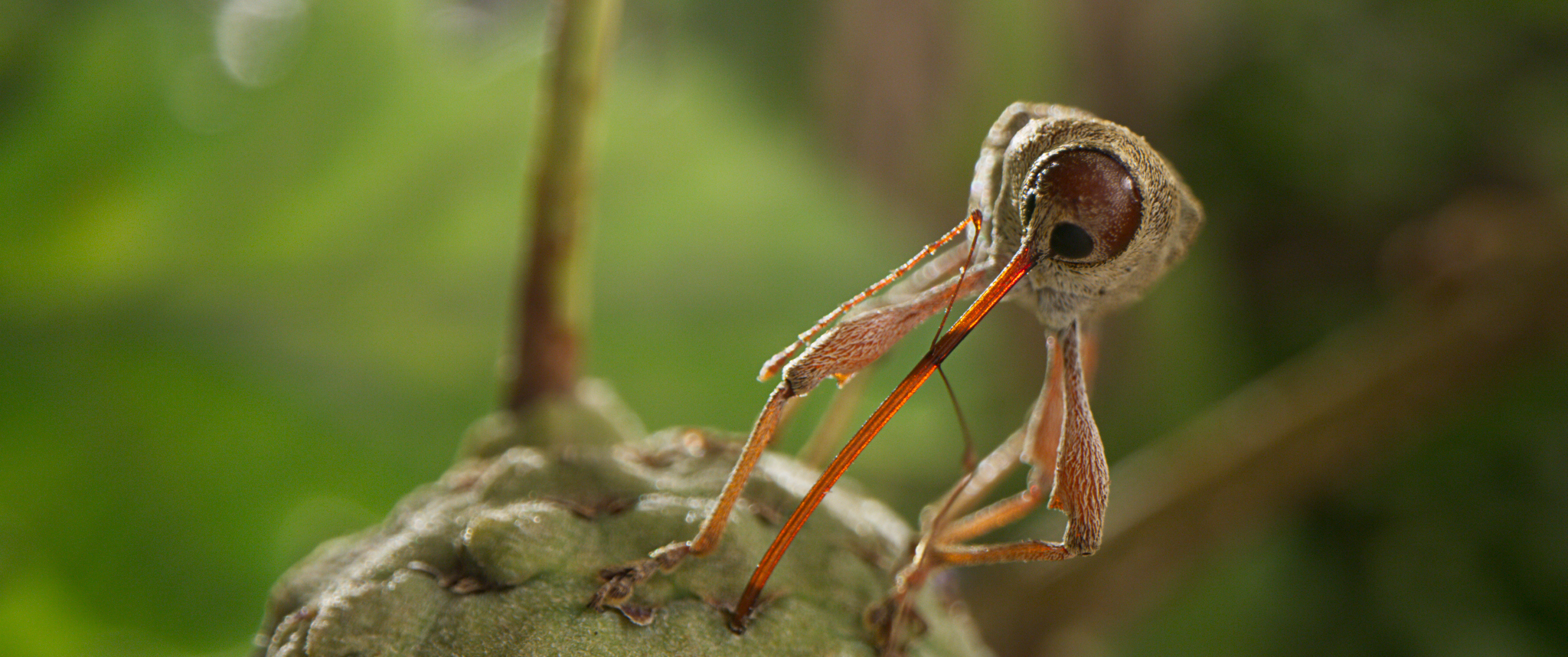Le Chêne (Heart of an Oak)
Le Chêne (Heart of an Oak), 2022, 4 stars
Tree of life
Nature doc is a simple yet profound pleasure
 Exclusive to MeierMovies, July 7, 2024
Exclusive to MeierMovies, July 7, 2024
“I think that I shall never see
a poem lovely as a tree.”
Joyce Kilmer’s words still ring true 110 years later. But you can’t draw the same comparison between trees and movies, at least not when discussing Le Chêne. This stunning French nature documentary, in just 80 narration-less minutes, rids your mind of the problems of the modern world, replacing them with an oak tree and the creatures great and small living in and around it. And it’s just as lovely as its subject.
Directors Laurent Charbonnier and Michel Seydoux introduce us to the 200-year-old oak, which lives in the Sologne region of north-central France, but it’s the squirrels, boars, deer, mice, birds, insects and countless other characters that give the film its entertainment value. It might not have enough intrigue for small children, at least not for the entire run, but it is family-safe, with the only hint of death coming at the hands – or lack of hands – of a snake that unsuccessfully stalks baby birds. That moment, and many others, might have been staged through clever editing by Sylvie Lager, but it matters little, as Le Chêne (literally “the oak” in English but changed to Heart of an Oak for its non-French release) is one of the most genuine and magical movies of the last few years.
As with similar nature docs, the real star is the cinematography. Charbonnier is joined by Mathieu Giombini and Samuel Guiton, and the trio conduct a masterclass in camera placement, framing, microdetail and patience, as they document the changing of the seasons over 12 months. It’s a shame that their accomplishments, and similar work by other nature-doc cameramen, have gone largely unrecognized by the big award shows.
Despite its status as a “true-life adventure,” to borrow a phrase from genre pioneer Walt Disney, Le Chêne features some nifty special effects, including segments that seem to employ either CGI or time-lapse photography, or both. (The film’s publicist was unable to clarify except to say the film employs the “latest audiovisual techniques” such as “360-degree virtual cameras, machinery, special effects, etc.”) And the movie’s use of music is occasionally anachronistic, but that only enhances the film’s whimsical brilliance. Admittedly, the movie is a tad repetitive, but only if you’re unable to adapt to the slower pace of the natural world.
See Le Chêne on the biggest screen possible. But if you can’t, put down your phone, walk away from your computer and spend time among nature, which is the only experience more satisfying than a good piece of art. I guess Kilmer was right after all.
© 2024 MeierMovies, LLC
First released in 2022, the film is now in limited release around the world. For more information about this movie, visit Wikipedia and IMDB.
